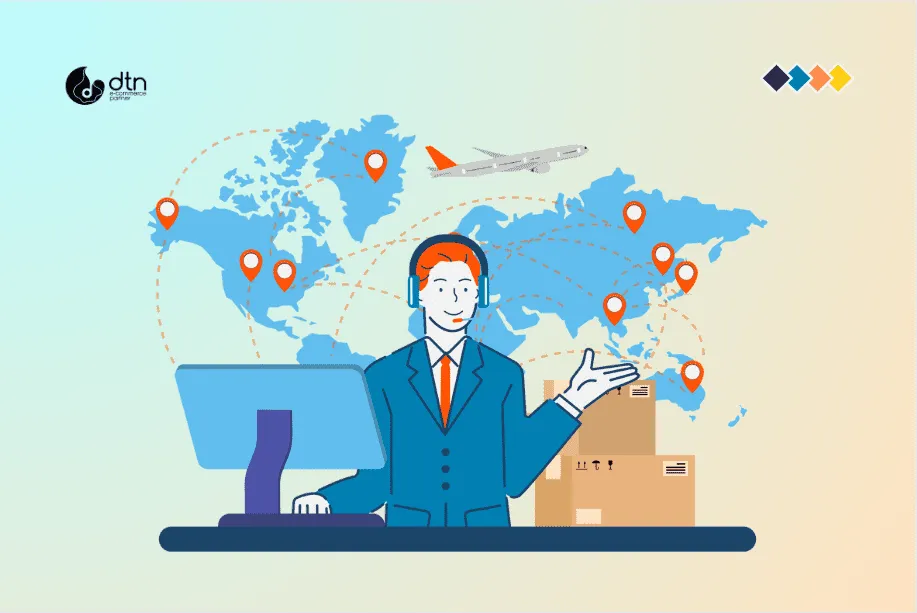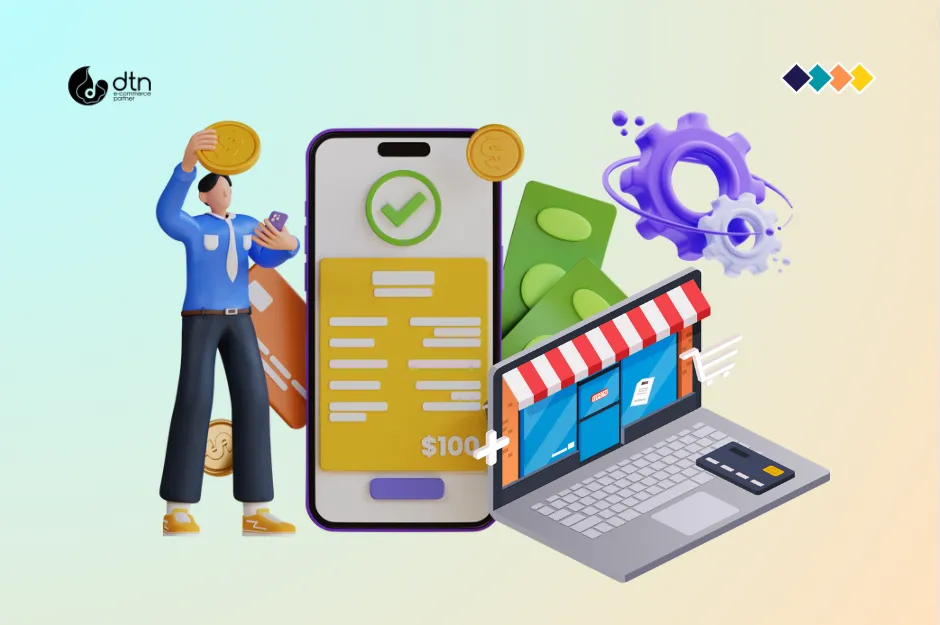Imagine running an online store selling handmade crafts. Your products catch the eye of shoppers in Europe, Asia, and beyond—but currency confusion at checkout leads to abandoned carts and lost sales. Sound familiar? In today’s borderless digital world, going global is a must for growth. With retail e-commerce sales projected to exceed $4.3 trillion worldwide by 2025 (Statista.com, 2025), businesses that master international payments are poised to thrive.
This guide explores multi-currency payment gateways, the tools that enable seamless cross-border transactions. We’ll cover the challenges they solve, their benefits, how to choose the right one, and the top options for 2025. Whether you’re a small business owner or a marketing leader scaling operations, you’ll find actionable insights to boost your global reach. Let’s break down barriers and turn international shoppers into loyal customers.
The Boom in Global E-commerce: Why It Matters Now
E-commerce is booming, fueled by smartphones, faster internet, and shifting consumer habits. Global e-commerce revenue is expected to reach $3.52 trillion by 2025, growing at a compound annual rate of approximately 6.37% through 2030 (Statista.com, 2025). Cross-border payments are projected to reach $250 trillion by 2027 (Forbes.com, 2024), highlighting a massive opportunity—and the need for innovative tools.
Shoppers expect a localised experience, including prices in their currency. 49% of US and UK consumers prefer to pay in local currencies for international purchases, which boosts conversion rates (Airwallex.com, 2024). Without this, you’re leaving money on the table. For more on building a strong online foundation, check out our guide to the best e-commerce platforms for beginners.

Common Challenges in Cross-Border E-commerce Payments
Expanding internationally is exciting, but payment hurdles can dampen enthusiasm. Here are the main pain points:
- High Fees and Hidden Costs: Traditional banks charge steep conversion fees, which eat into their margins. Fluctuating exchange rates can cost businesses 3-5% per transaction due to unfavourable rates.
- Slow Processing Times: Manual conversions or incompatible systems delay orders, contributing to cart abandonment rates around 70% globally.
- Limited Payment Choices: Not everyone uses credit cards. In regions like Europe or Asia, locals favour digital wallets or bank transfers, and ignoring these alienates buyers.
- Security Risks and Fraud: Cross-border deals increase scam exposure, with global payment fraud rising in tandem with the $3.1 trillion in payments revenue expected by 2028 (Worldpay.com, 2024).
These aren’t just annoyances—they can stall growth. Multi-currency gateways tackle them head-on.

How Multi-Currency Payment Gateways Simplify Global Transactions
Multi-currency payment gateways act as smart bridges between your store and international buyers. They detect a shopper’s location, display prices in their local currency, and handle conversions in real-time—all while integrating with your e-commerce platform.
Key features include:
- Automated Conversions: Live exchange rates ensure accurate, instant pricing without manual work.
- Diverse Payment Support: From cards and e-wallets, such as Apple Pay, to local methods like SEPA in Europe or UPI in India.
- Built-in Security: Advanced encryption, tokenisation, and AI-powered fraud detection protect transactions.
- Analytics and Reporting: Track performance across currencies to optimise strategies.
In 2025, AI enhances these tools, enabling predictive fraud alerts and personalised payment options that reduce declines by up to 20% (Stripe.com, 2024). We’ve seen how machine learning analyses patterns in real-time, making payments faster and wiser.

Key Benefits: Boost Revenue and Customer Loyalty
Adopting a multi-currency gateway isn’t just about fixing problems—it’s about unlocking growth. Here’s how:
- Wider Market Access: Reach customers in 100+ countries without currency barriers, potentially increasing international sales by 30-50%.
- Higher Conversion Rates: Local currency pricing fosters trust, resulting in a 10-15% increase in conversions (Airwallex.com, 2024).
- Cost Savings: Lower fees and automation cut overhead. One brand saved 2% on transactions after switching, adding thousands to their bottom line.
- Better Customer Experience: Seamless checkouts drive repeat business and positive reviews. AI suggests optimal payment methods based on user behaviour.
- Scalability for Growth: Handle volume spikes smoothly, supporting startups and enterprises alike.
Global payments revenue is projected to reach $3.1 trillion by 2028, driven by innovations such as those from Worldpay.com (2024). Pair this with tips from our SEO for e-commerce article for maximum impact.

Choosing the Right Multi-Currency Payment Gateway: A Step-by-Step Guide
Not all gateways are equal. Here’s what to evaluate:
- Currency Coverage: Support 100+ currencies, focusing on your markets (e.g., EUR, USD, GBP, INR, BRL).
- Pricing Transparency: Seek low fees (1-3%) with no hidden costs. Compare setup and scalability tiers.
- Integration Ease: Ensure compatibility with Shopify, WooCommerce, or BigCommerce. APIs are a plus for custom tweaks.
- Security and Compliance: PCI DSS compliance is essential, along with 3D Secure and AI fraud detection tools (Checkout.com, 2024).
- Customer Support: 24/7 access via chat, phone, or email for quick fixes.
- Additional Perks: Look for analytics, subscription handling, or mobile optimisation.
Test with free trials, and consider your business size—small shops prioritise simplicity, while enterprises need robust reporting.

Top Multi-Currency Payment Gateways for 2025
Based on features, reviews, and global capabilities, here are standout options:
- Stripe: Supports 135+ currencies with AI-driven fraud prevention. Ideal for tech-savvy businesses; integrates with e-commerce tools (Stripe.com, 2024).
- PayPal: Trusted in 200+ countries with easy setup. Great for beginners, with strong buyer protection.
- Adyen: Enterprise favourite, handling 150+ currencies and local methods. Excels in high-volume ops (Adyen.com, 2024).
- Payoneer: Suits freelancers and SMBs with multi-currency accounts and low fees.
- Worldpay (FIS): Robust for large retailers, with extensive fraud tools and regional expertise.
For small businesses, Stripe and PayPal are often the leading options (Shopify.com, 2024). Check pricing on their sites.
Real-World Examples and Practical Tips
A Shopify apparel brand using Stripe saw a 25% increase in European sales with localised pricing, resulting in a decrease in cart abandonment (Airwallex.com, 2024). A tech gadget seller using Adyen reduced fraud losses by 40% with AI analytics, freeing resources for marketing.
Practical tips:
- Start Small: Test your setup in one market to refine it.
- Monitor Rates: Utilise gateway tools to secure favourable exchange rates.
- Localise Fully: Pair with geo-targeted content for a complete experience.
- Stay Compliant: Follow regulations like GDPR for EU customers.
Conclusion: Step Into the Global Arena with Confidence
Multi-currency payment gateways are your ticket to thriving internationally. By tackling payment hurdles, boosting conversions, and leveraging AI, they help you compete globally. With e-commerce soaring in 2025, now’s the time to act.
Ready to expand? Evaluate your setup, pick a gateway, and watch sales grow. Contact our e-commerce experts for personalised advice or integration tips. Your global success story starts here.
References
- Statista.com, 2025: https://www.statista.com/outlook/emo/ecommerce/worldwide
- Forbes.com, 2024: https://www.forbes.com/sites/forbesbusinesscouncil/2024/03/04/the-future-of-cross-border-payments-in-apac-opportunities-and-challenges/
- Airwallex.com, 2024: https://www.airwallex.com/blog/cross-border-payments
- Worldpay.com, 2024: https://www.worldpay.com/en/insights-hub/article/global-payments-report
- Stripe.com, 2024: https://stripe.com/resources/more/global-payments
- Adyen.com, 2024: https://www.adyen.com/knowledge-hub/global-payments
- Shopify.com, 2024: https://www.shopify.com/blog/best-payment-gateways
- Checkout.com, 2024: https://www.checkout.com/resources/payment-security
Frequently Asked Questions
We’ve compiled a list of answers to common questions.
What are the biggest challenges with multi-currency payments in e-commerce?
High fees, delays, and fraud risks are key hurdles; however, gateways mitigate these issues with automation and security.
How do multi-currency payment gateways improve conversion rates?
Local pricing and preferred methods reduce friction, resulting in a 10-15% increase in conversions (Airwallex.com, 2024).
What are the best multi-currency payment gateways for small businesses in 2025?
Stripe and PayPal are top for ease and affordability; Adyen suits scaling businesses.
How does AI enhance payment gateways?
AI detects fraud, personalises options, and speeds up processing, reducing declines and enhancing security.
Is it worth switching to a multi-currency gateway for my online store?
Yes—if you’re eyeing global growth, the ROI from increased sales often outweighs setup costs.



